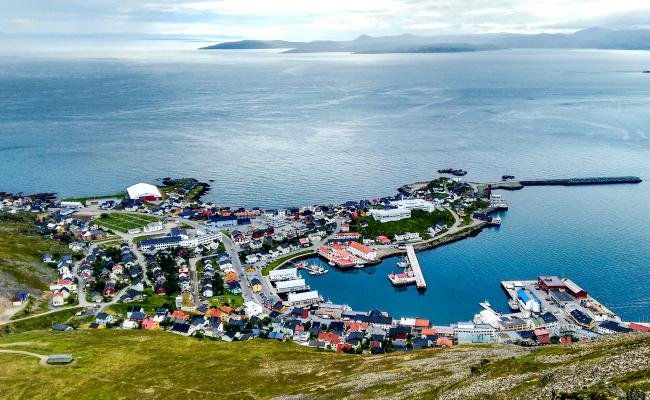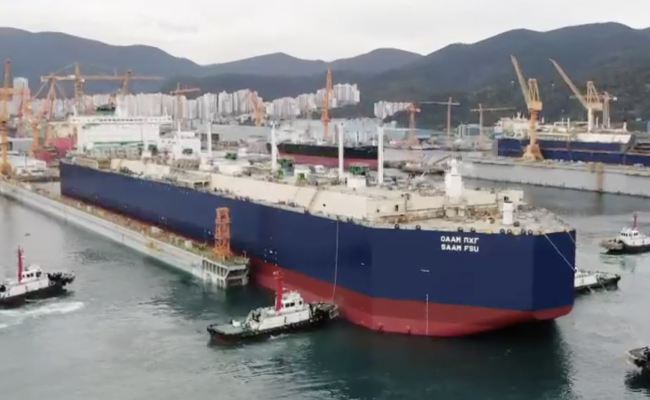Norway Sees Greatest Increase in Arctic Shipping Traffic
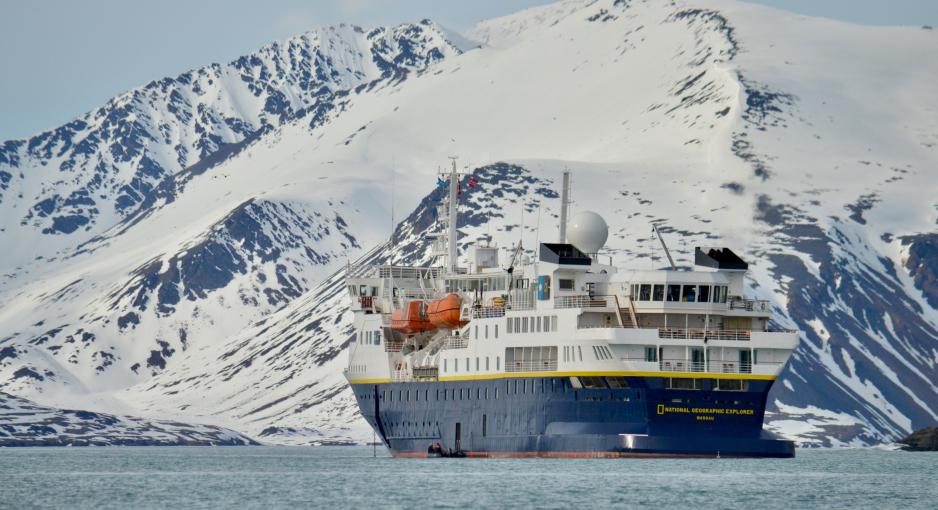
Cruise ship National Geographic Explorer off the coast of Svalbard. (Source: Megan Coughlin under CC BY-ND 2.0)
Norway leads all Arctic coastal states in terms of shipping traffic increase the 2022 Report Card finds. Norwegian Arctic waters account for nearly two-thirds of all shipping traffic in the region, ahead of Russia and Iceland.
Norway’s northern waters in the Norwegian and Barents Sea continue to experience rapid growth in shipping traffic, data in the 2022 Arctic Report Card conclude.
The report, published annually by the National Oceanic and Atmospheric Administration (NOAA) in the U.S., shows that the ship count along the coastal waters above the Arctic Circle and in waters around Svalbard has increased by 42 percent annually over a 9-year period.
The increase in activity arises from both more local and intra-Norwegian traffic, e.g. cruise ship and fishing vessel activity around Svalbard, and also from greater transit traffic, meaning vessels passing through Norwegian waters into and out of the Arctic. The latter category relates to a greater number of oil and gas carriers traveling from the Russian Arctic to and from Europe.
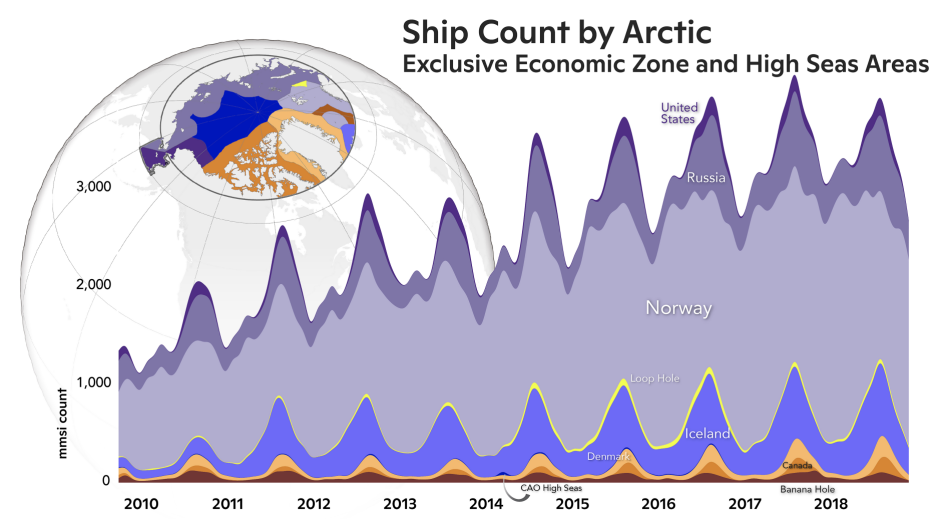
Arctic ship count using data points from Automatic identification systems (AIS) transponders between 1 September 2009 and 31 December 2018. (Source: NOAA, with data from Berkman et al. 2022)
Growing faster than
Norway’s Arctic shipping traffic has experienced growth far above the other Arctic coastal states. Iceland’s and Russia’s waters have seen annual increases of 11 percent and 9 percent respectively. Growth in Canada, Greenland and the U.S. has been limited with between 1-2 percent.
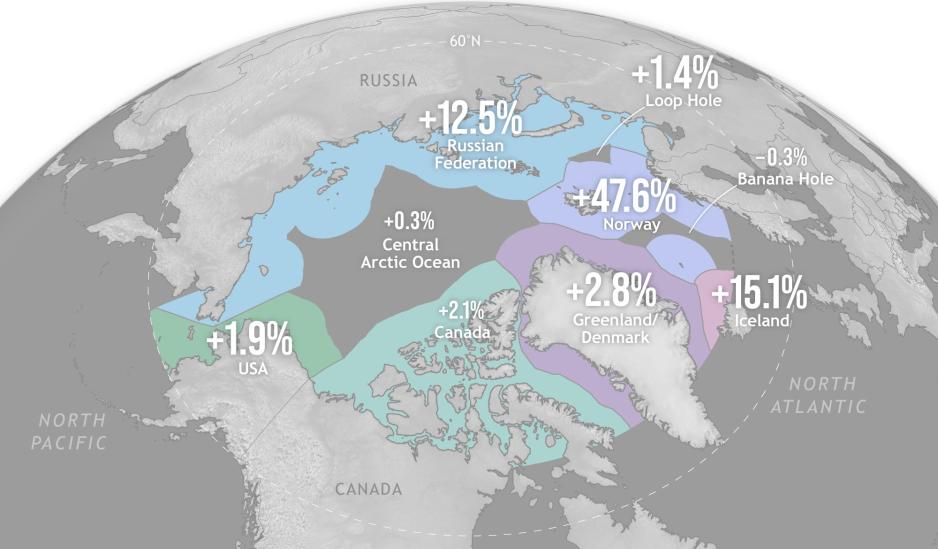
Annual increase in summer shipping traffic by Arctic region between 2009-2018. (Source: NOAA)
In contrast to Russia’s Arctic waters which see significant intra-annual variation – more shipping during ice-free summer months and less traffic during ice-covered winter months – Norway’s coastal waters are ice-free year round. In fact, the country has seen a slightly higher growth during winter than during summer time.
Out of a total of 277,000 unique ship days recorded in the Arctic in the nine-year period, Norway registered more than 176,000 or 63 percent of all ship movements. Russia and Iceland were second with close to 44,000 and 41,000 ship days respectively representing 15-16 percent of all traffic.

Annual and seasonal shipping traffic trends in the Exclusive Economic Zones of Arctic states. (Source: NOAA)
The location of Norway’s Arctic waters means that increases in shipping traffic in other parts of the region, especially those arising from the development of Russia’s Arctic natural resources, will pass through the country’s seaboard. Norway’s waters of the Barents and Norwegian Seas serve as a natural extension of Russia’s Northern Sea Route.
All roads lead to Norway
As traffic on the NSR increases so will traffic in the Norwegian part of the Barents Sea and further down the coastal waters of the Norwegian Sea. One example of this type of shipping activity is the reloading of millions of tons of liquefied natural gas (LNG) by Norwegian shipping company Tschudi off the coast of Honningsvåg for Russian company Novatek between 2018-2020.
The installation of a permanent transshipment hub for LNG to the west of Murmansk, around 100 kilometers from Norway’s waters, will bring additional shipping traffic in the coming years, especially once Novatek’s next megaproject, Arctic LNG 2, begins operation later this year.
As Arctic sea-ice continues to diminish, Norway may also see an increase in traffic from the central Arctic Ocean. A number of studies indicate that a future Transpolar Sea Route, passing in proximity of the North Pole, could open up around mid-century. Such traffic would also pass in proximity to Svalbard and travel down the Norwegian coastline en route to and from Europe.


